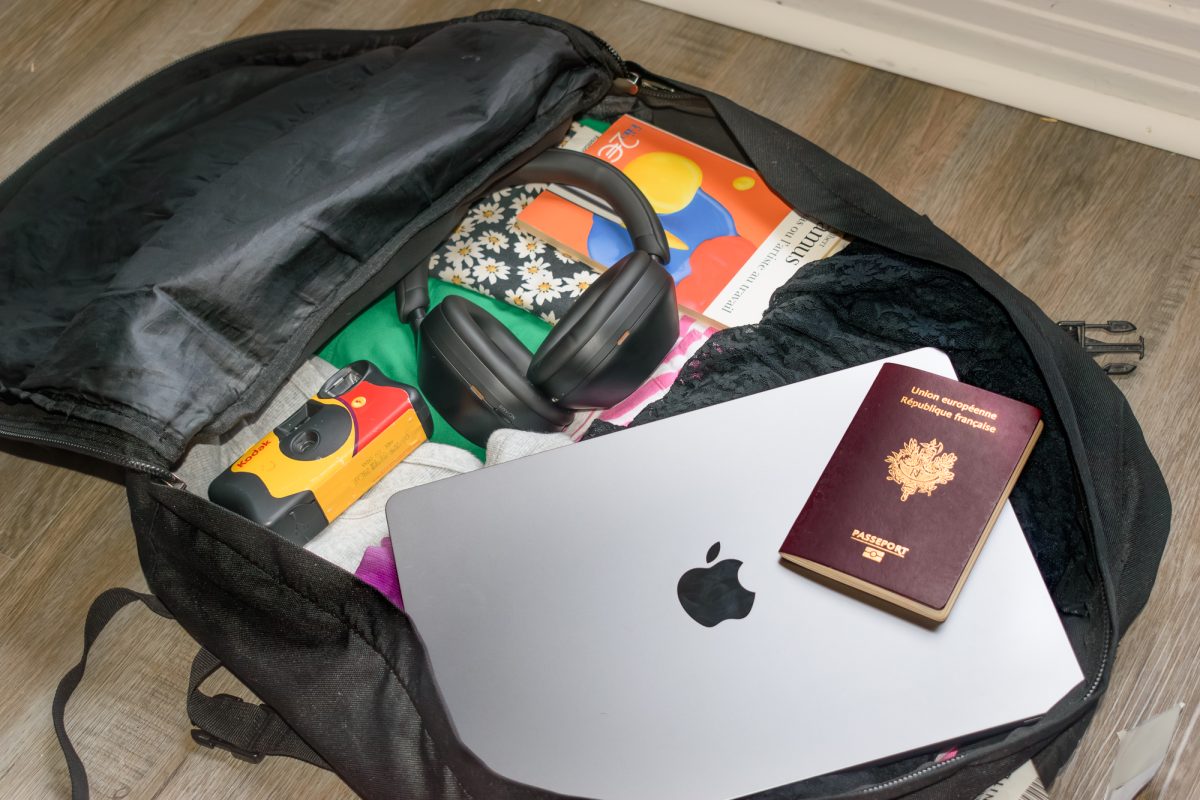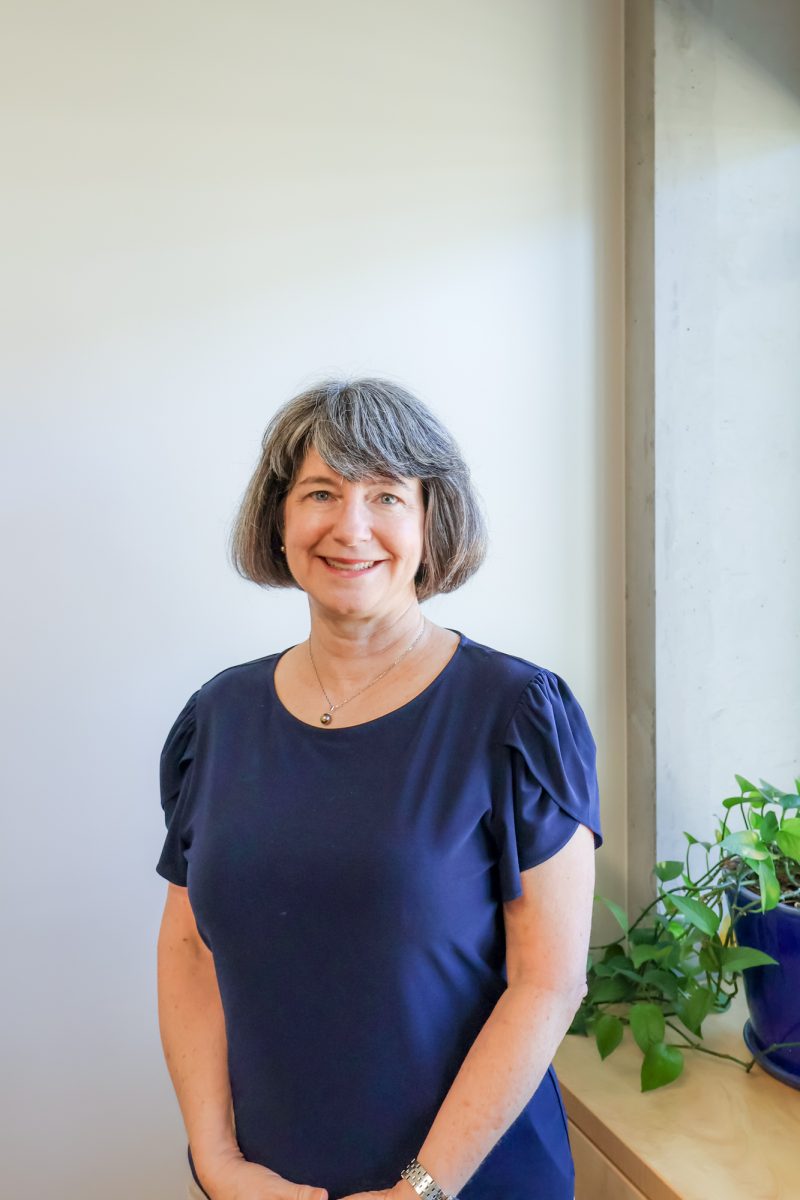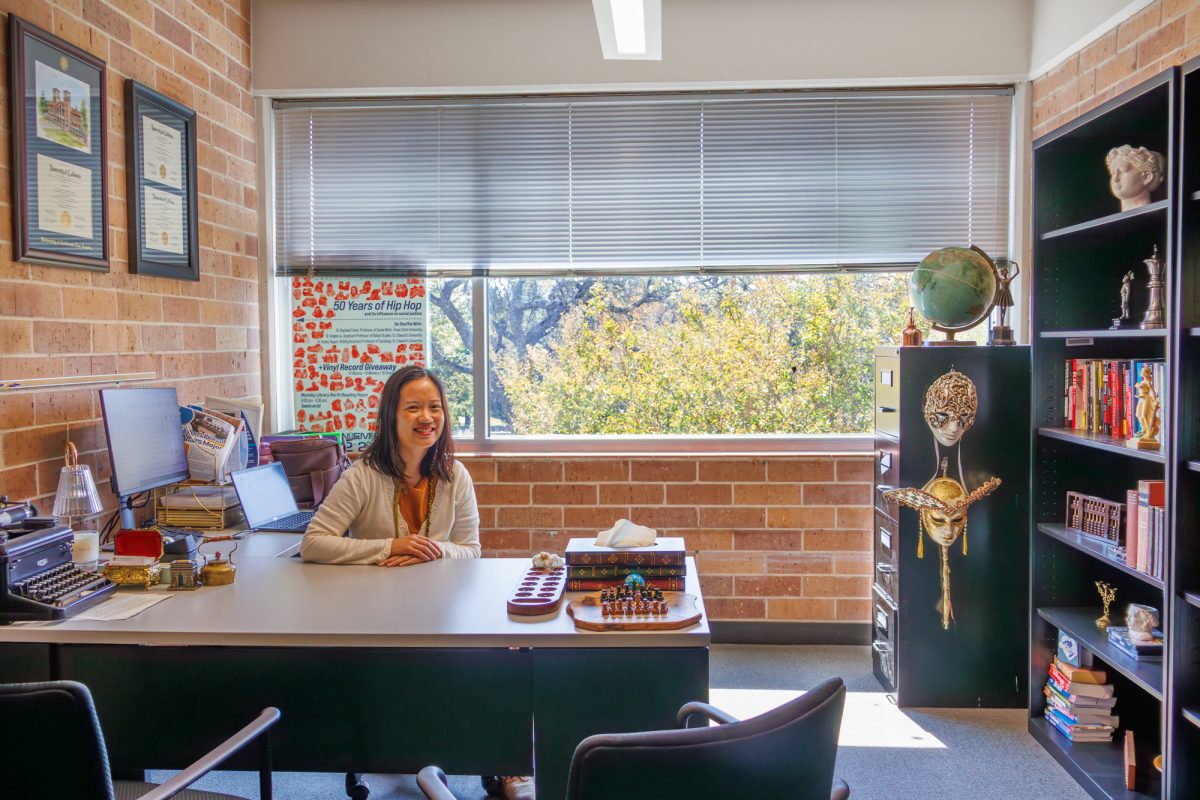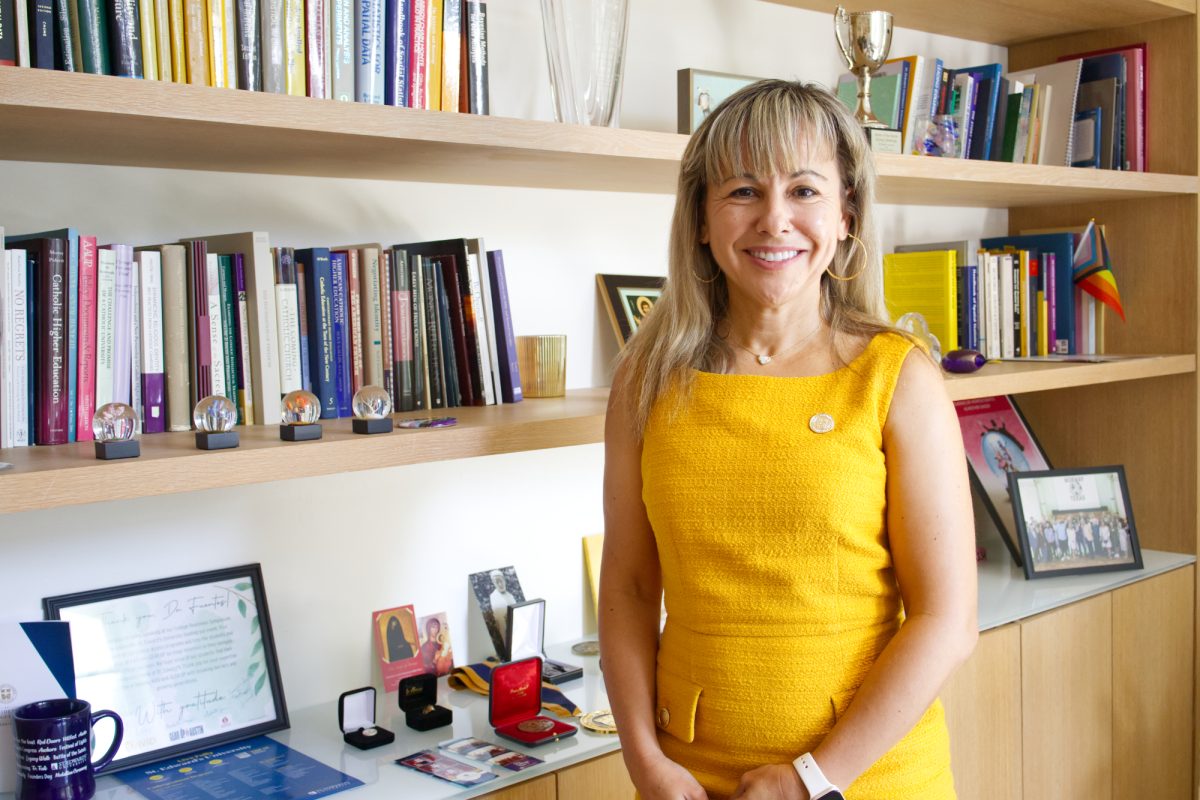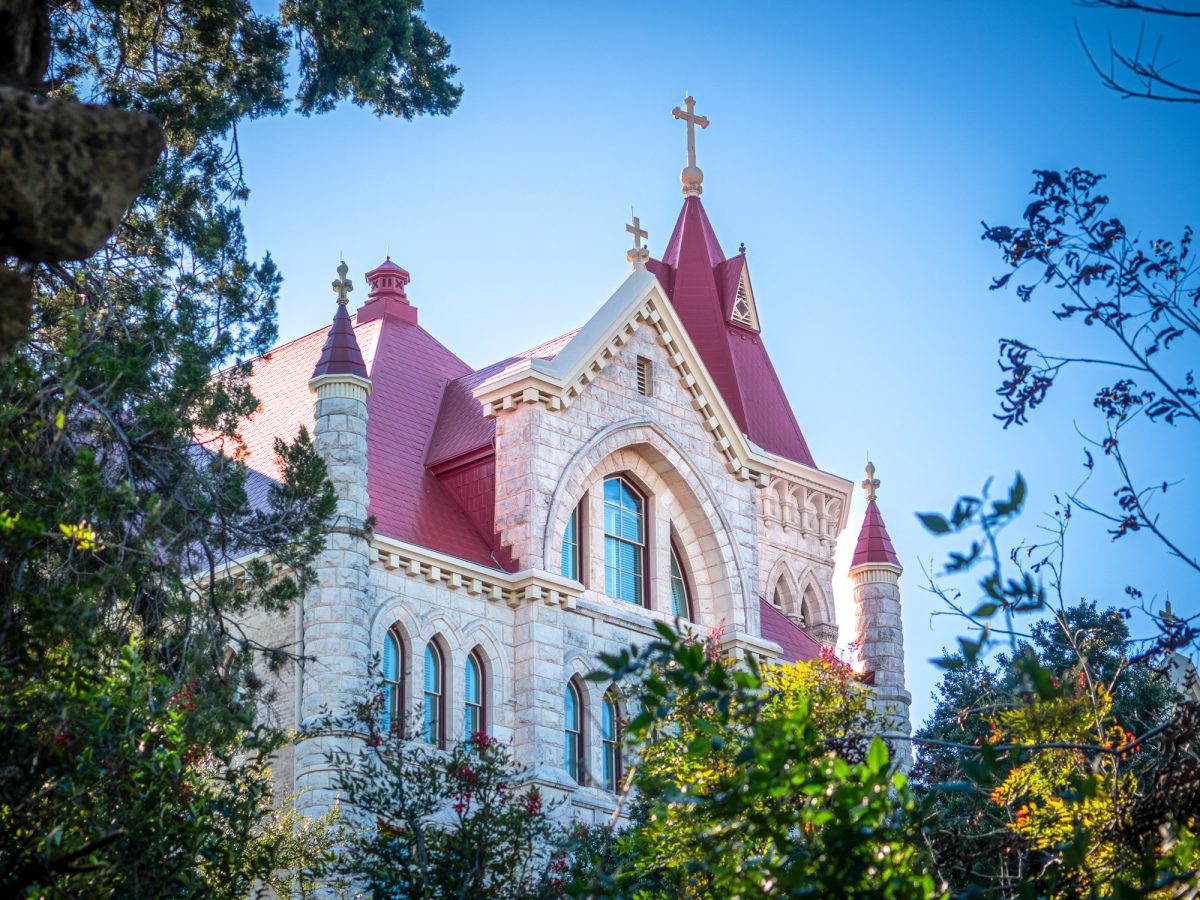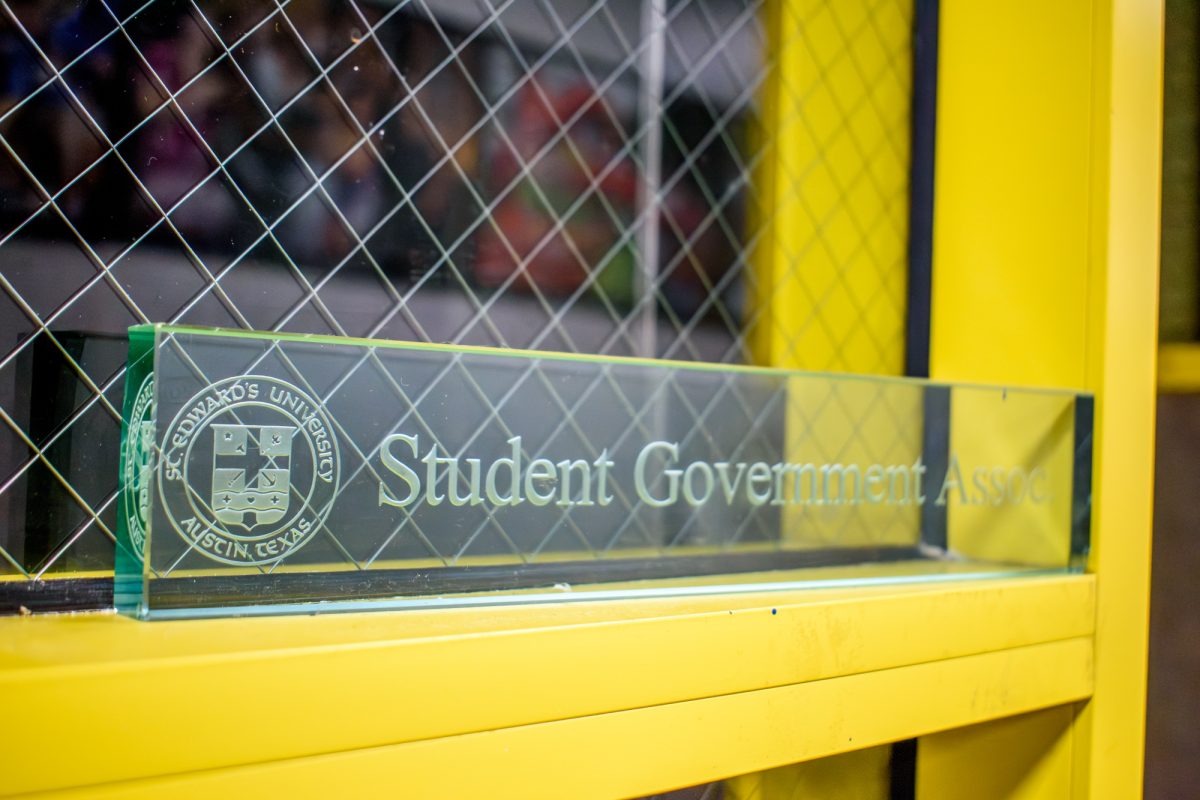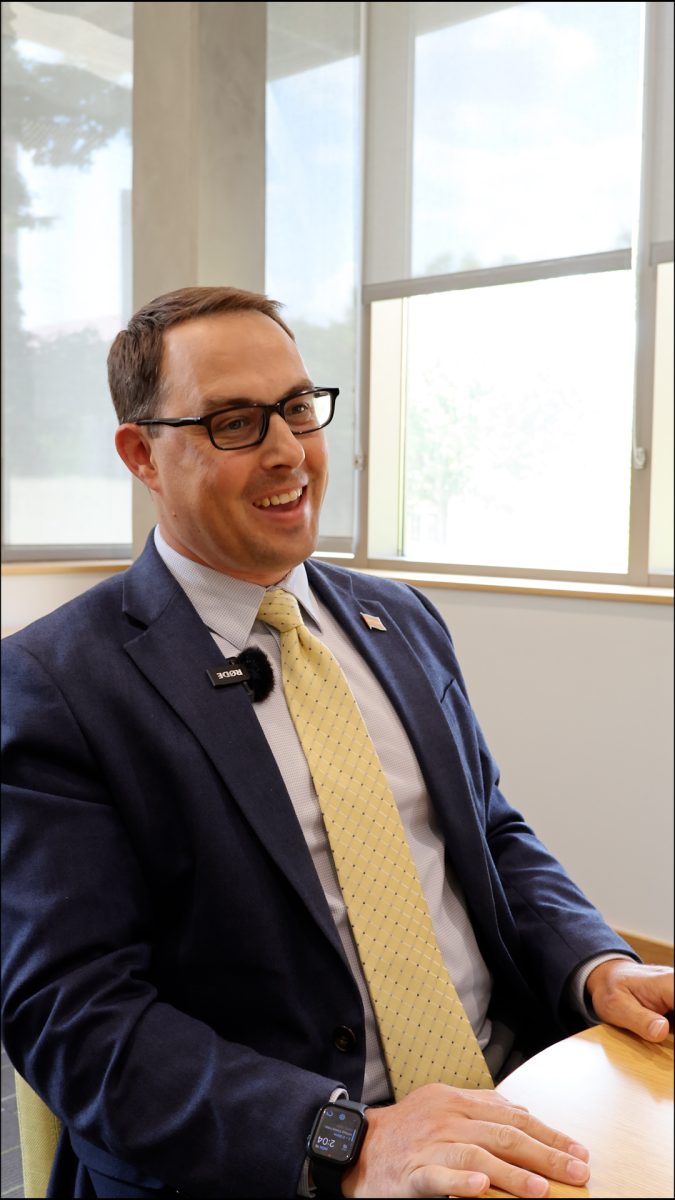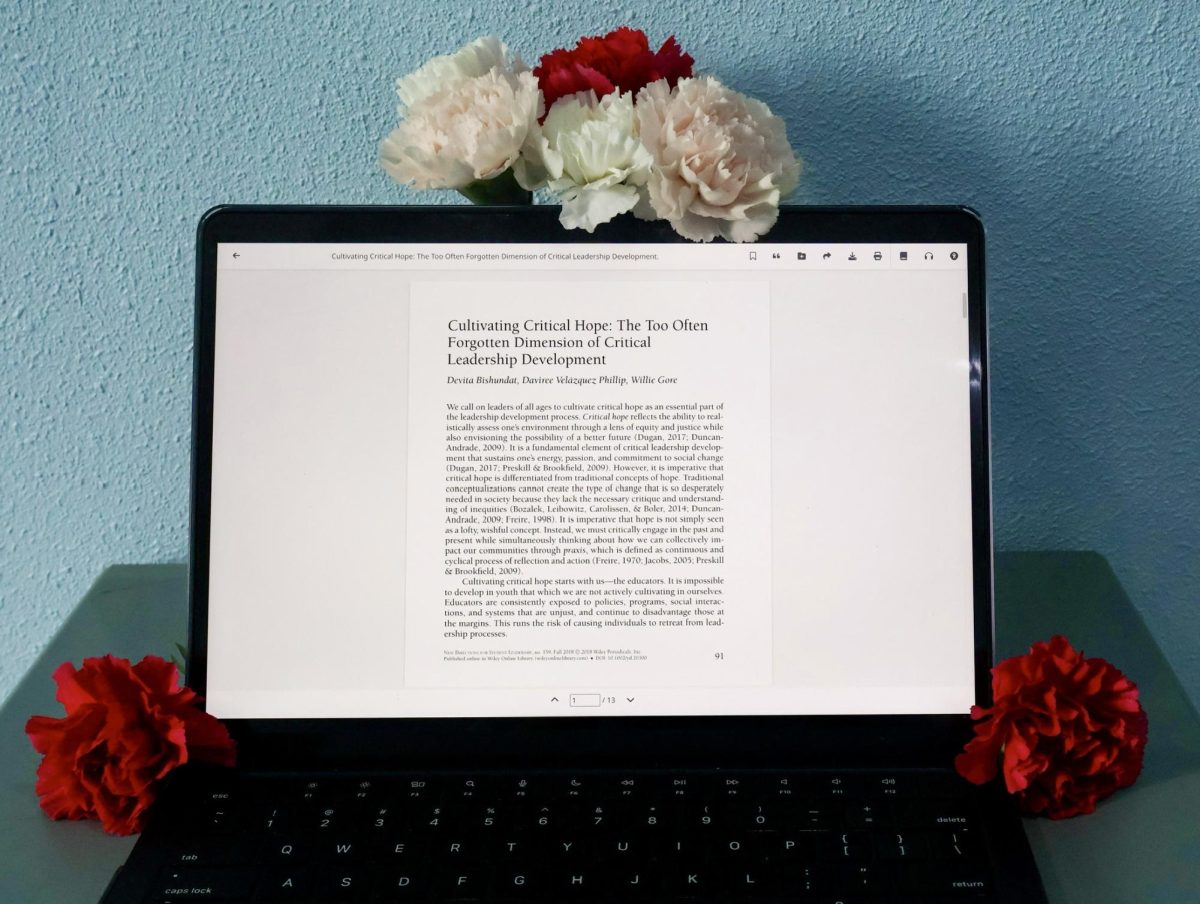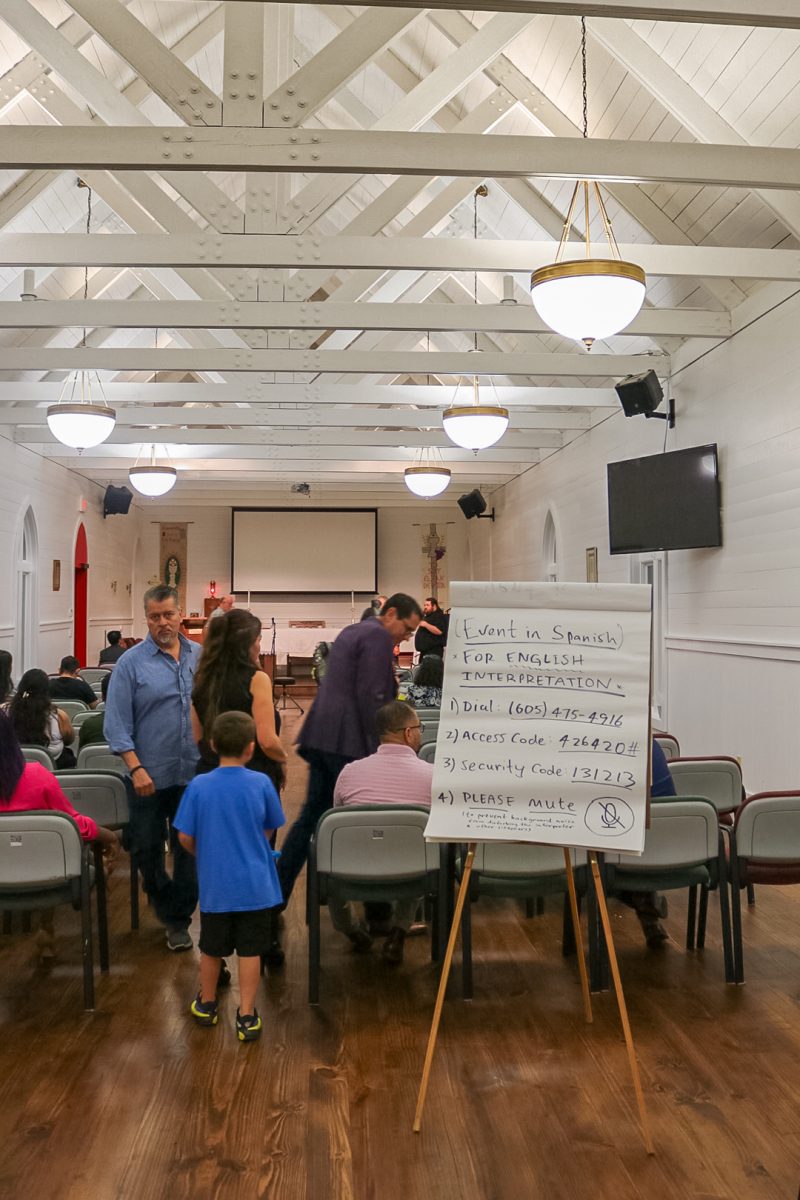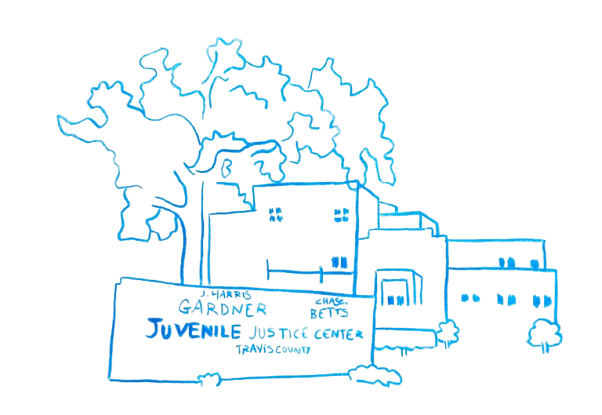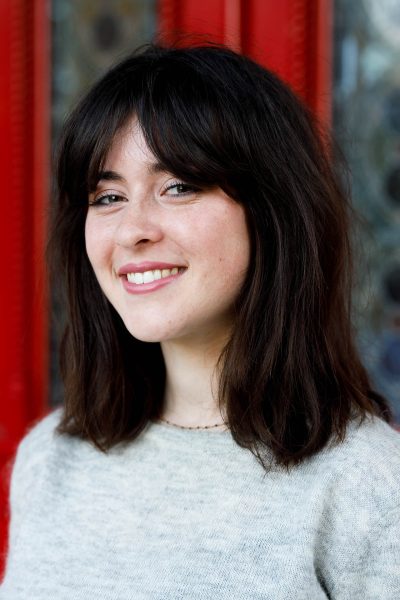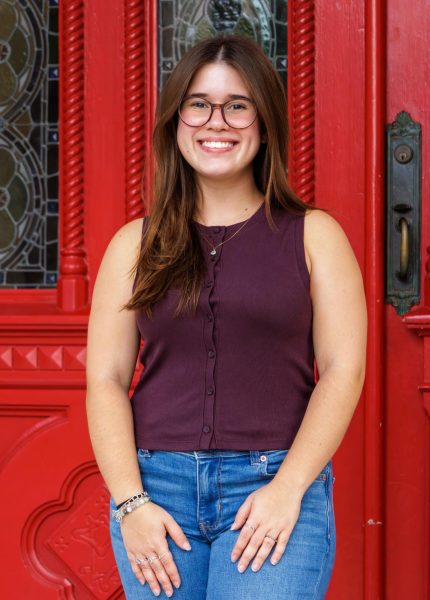Editor’s note: Hilltop Views acknowledges the uncertainty that international students around the U.S. are facing as a result of deportations and policies revoking student visas. For this reason, international students quoted in this article are identified by first names only. We hope that these articles highlight how international students contribute to our campus community and how our university works to support them and promote their academic success.
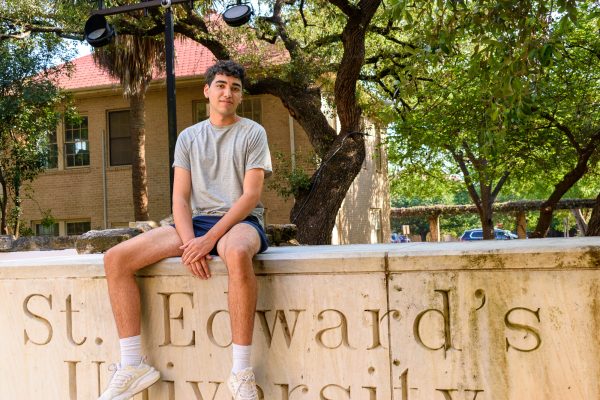
Santi, a finance junior from Santiago, Chile, chose St. Edward’s University because he wanted to experience the American culture and step outside of his comfort zone.
“En Chile ya tenía todo muy asegurado: mis amigos, mi círculo social, todo,” Santi said. “Quería salir de mi burbuja y conocer a más gente. También sabía que en Austin había muchos estudiantes internacionales, y eso me motivó mucho. Vine específicamente a St. Edward’s porque es parte de la Congregación de Santa Cruz, y mi colegio también lo es, así que tienen un programa que facilita venir acá.” (“In Chile, everything felt very secure: I already had my friends, my social circle, everything,” Santi said. “I wanted to break out of my shell and meet new people. I also knew that Austin had a lot of international students, and that really motivated me. I specifically came to St. Edward’s because it’s part of the Congregation of Holy Cross and my high school is also part of it, so they have a program that makes it easier to come here.”)
In the preparation process for coming here, Santi was in a program called EducationUSA, which helps students from all over the world throughout the process of coming to the U.S. For him, the hardest part was getting the visa. However, once on the hilltop, Santi faced other challenges.
“Creo que siempre estuve muy estresado por conseguir trabajo, porque sabía que acá tienes que empezar por el proceso de obtener el seguro social para ser elegible,” Santi said. “También abrir una cuenta de crédito y débito para que me pudieran pagar y manejar mis gastos en dólares, sin depender tanto de mis tarjetas internacionales. Esos fueron mis mayores desafíos al principio, porque no sabía a quién recurrir. Pero me enseñaron a ser ordenado y aprendí mucho sobre finanzas e impuestos. Cuando uno abre una cuenta de crédito acá, uno empieza a construir su credit score, que va creciendo con el tiempo y refleja qué tan bien manejas tus finanzas personales.” (“I think I was always really stressed about finding a job because I knew you need to get a Social Security number here to be eligible to work,” Santi said. “Also, opening a credit and debit account so I could get paid and manage my expenses in dollars without relying so much on my international cards. Those were big challenges because I didn’t know who to turn to. But it taught me to be organized, and I learned a lot about finance and taxes.”)
Santi sees the advantage of being an international student, which opens many doors and expands his social circle, giving him the chance to meet people from all over and not just Americans. When it comes to taking care of his mental health, being around friends is what helps him the most.
“Siento que mi círculo de amigos es mi mayor apoyo, porque soy muy extrovertido, entonces me gusta estar rodeado de gente, y siento que ellos me ayudan a vivir más el presente y a no pasar tanto tiempo solo en mi pieza,” Santi said. “Así que creo que eso es una de las cosas que más me ha ayudado.” (“I feel that they are my biggest support because I am very extroverted, so it’s like I like to be in a group, and I feel that they help me to live more in the moment and not spend so much time alone in my room,” Santi said. “So I think that’s been one of the most helpful things for me.”)
His major challenge now, as a junior, is to get an internship and a sponsored visa.
“Tuve la suerte de estar aplicando desde hace mucho tiempo, porque tuve unos profesores que me recomendaron postular temprano, especialmente porque como somos internacionales es más difícil conseguir una internship — ya que la mayoría de las empresas busca gente a la que no tengan que hacerle sponsorship en el futuro,” Santi said. “Así que ese fue uno de mis desafíos más grandes. Pero ahora conseguí una internship en Nueva York y voy a trabajar en Equity Research, así que estoy demasiado emocionado por eso.” (“I was lucky that I started applying early, thanks to professors who advised me to do so, especially because it’s harder for international students — most companies don’t want to sponsor visas,” Santi said. “That was a huge challenge, but now I got an internship in New York this summer working in Equity Research, so I’m super excited.”)
During his three years of college, the most helpful resource was ISS, which helped him learn how to get a Social Security number and apply for a driver’s license.
Santi isn’t the only student who sees value in more structured support. He and others like International Student Association Marketing Coordinator Chris, an international business senior from Tegucigalpa, Honduras, mentioned the importance of having workshops that guide international students with the help of experts. While ISS already brings in an immigration lawyer each year, Chris said it would be incredibly helpful to also hear from professional business leaders who could walk them through how to find internships or navigate their taxes in the U.S.
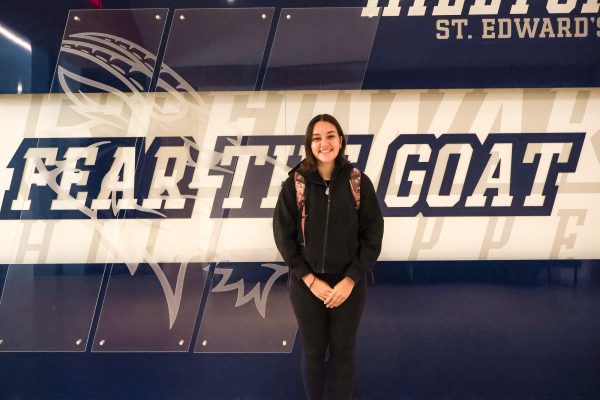
Majo, a senior graphic design and photography student from San Jose, Costa Rica, admits she often feels torn between two homes. Like many international students, Majo always knew that she wanted to study abroad. While looking for potential universities, going to a school that wasn’t so focused in arts was her goal, so the St. Edward’s curriculum and its location in Austin resonated perfectly with the path Majo wanted for herself. She recalls the initial uncertainty about how the process would go, but remembers how “beautiful” her first year was and how grateful she felt for having this opportunity. However, that year moved quickly, and new pressures quickly emerged.
“After that first year I was like ‘oh my God, I have only three years left,’ which seems like a lot but for us (international students) it’s very little because you have to move quickly with work experience to be able to maybe, hopefully, stay in the United States,” Majo said. “My first year was amazing, it was a dream, but I feel like there was definitely a culture shock.”
For Majo, the main difference was the mentality of Americans and how they approached interpersonal relationships. Coming from a Latin American country, the lack of emotional connections that she saw in the U.S. took a long time to get used to — “everything in your life kind of shifts.” Majo also struggled with balancing her identity and personality that she developed before coming to the U.S. with the new things she learned during her time here. Looking back on her first years, she realizes that she tried to change herself to fit in — especially when it came to how she addressed her emotions and how she communicated with the people around her.
“Being from another country is not an excuse, it’s not a bad thing,” Majo said. “I bring a lot of richness to the culture in the United States and being from Costa Rica is what makes me unique. In my first semester, I would hang out with so many people from the United States, and I would try to immerse myself completely in the culture and try to think like them and be like them. I feel like that is something that every college student goes through; you go through like a whole personality change at the beginning of your years in college and coming here was weird because I was doing that without my culture and the people who support me. So I kind of just lost myself a little bit trying to fit in. I’ve learned to understand that being from another country is a strength and understand that I’m different and that’s okay.”
Majo’s realization is something she tries to translate into her photography and design work. Combining her home country with her passion for art has helped her “cope with all the changes” that have happened in her life. This creative outlet became a way for her to not only reconnect with her identity but also to appreciate her home country even more. She also describes it as a way to embrace parts of the American culture, such as the “work hustle” as she describes it, since she was able to work during her undergraduate years as a photographer and as a designer — working mostly on campus with the athletic department, but also securing a summer internship with the MLS club Inter Miami and volunteer opportunities with Copa America. The opportunities she has been able to take advantage of and the experiences she has gained throughout her time here are some of the things that give her the motivation to keep going.
“I feel like my heart is split in two,” Majo said. “I have my childhood country, the place where my parents raised me and where I became the person I am, but I also have Austin, which is the place that I chose and where I have created a life for myself. Sometimes life gets tough, you start getting very homesick and you kind of forget how far you’ve come and how much you fought to be here, so I always try to remind myself of the reason I’m here — how hard my parents have worked, how hard my grandparents have worked — and that gives me a little bit of strength, knowing how far I’ve come and that despite all the challenges I’m still here, in Austin. Keeping myself busy with the things that I love and enjoying it keeps my mind away from thinking ‘I’m not home.’ Just making the most of my time here has been something that has really helped me mentally.”
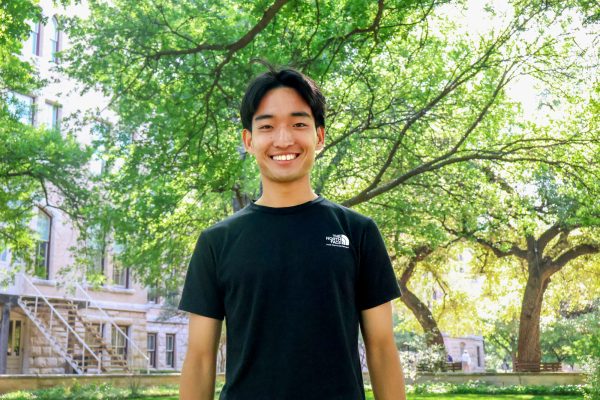
Shunji, an international affairs senior from Tokyo, had a very unusual path to the hilltop. Starting as an exchange student through the study abroad program offered by Asian Pacific University, which he attended prior to coming to the U.S., Shunji decided to fully transfer to St. Edward’s due to the opportunities offered through the newly reinstated soccer program and the possibility of studying to become a certified public accountant in the future.
To Shunji, what helped him the most when adapting to the new environment was to take his time and not rush the process. However, he understands the importance of immersing yourself in the culture and learning from those around you. Major cultural differences, such as language and cultural expressions, can only be learned by being honest with yourself and others as well as asking questions and expressing how you feel. The things that have helped him have been to participate in club sports and now the men’s soccer team. Those organizations have taught him resilience, communication and commitment, and have been the main driving force behind his development throughout his undergraduate years in the U.S.
Whether it is on-campus jobs, creative expression or soccer practice, these students continue to make a place for themselves far from home. In doing so, they remind the hilltop of the strength and richness that international students bring to campus life.
This marks the final article in our solutions-focused series on international students. Thank you for following along — and to everyone who trusted us with their stories.
Gabrielle and Anna

